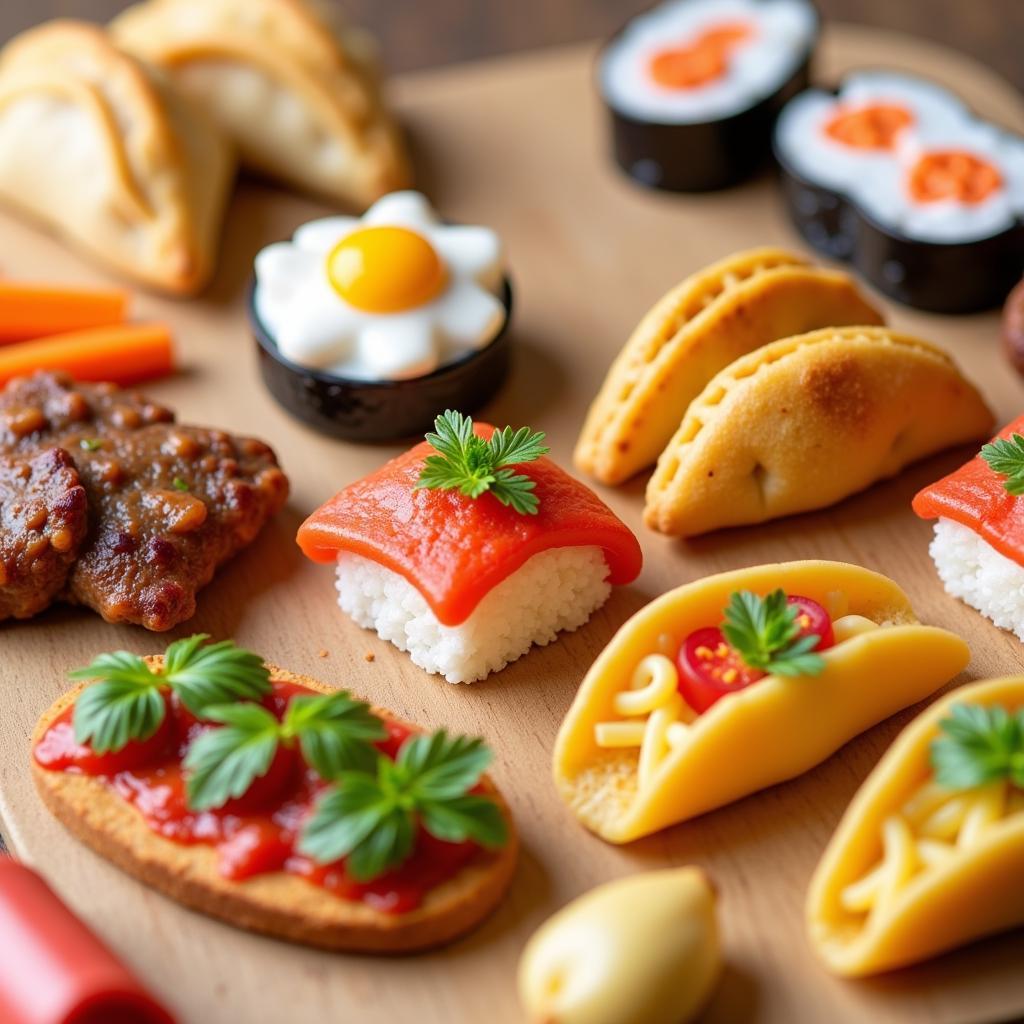Play Pretend Food has been a childhood staple for generations. There’s something inherently captivating about mimicking the adults in our lives, whipping up imaginary feasts, and serving them with a flourish. But “play pretend food” is more than just a playful pastime, it’s a valuable tool that unlocks a world of learning and development for children.
 Children Role-Playing in a Pretend Restaurant
Children Role-Playing in a Pretend Restaurant
The Benefits of Play Pretend Food: A Recipe for Development
From boosting language skills to fostering social-emotional intelligence, play pretend food offers a wealth of benefits:
- Language Development: Describing imaginary dishes, taking orders, and engaging in conversations about food expands vocabulary and encourages communication skills.
- Social Skills: Sharing, taking turns, and negotiating roles in pretend play scenarios are fundamental to social development.
- Cognitive Growth: Play pretend food encourages symbolic thinking, problem-solving, and creativity as children imagine and manipulate objects to represent something else.
- Fine Motor Skills: Whether it’s slicing a toy banana or pouring pretend tea, these actions refine hand-eye coordination and fine motor control.
Choosing the Perfect Play Food Cutting Set: A Guide for Parents
With countless options available, selecting the right play food cutting set can be overwhelming. Here are key factors to consider:
- Material and Durability: Look for sets made from high-quality, non-toxic materials built to withstand enthusiastic play. Play food cutting set options are often made from sturdy plastic or wood.
- Realism: Realistic-looking play food enhances the imaginative experience. Consider sets that mimic the appearance and texture of real ingredients.
- Variety: A diverse selection of play food, from fruits and vegetables to complete meals, offers endless possibilities for creative play scenarios.
- Age Appropriateness: Choose a set with pieces and features suitable for your child’s age and developmental stage.
Beyond the Basics: Exploring Global Cuisines with a Food Around the World Box
Want to expand your child’s culinary horizons? A food around the world box opens a window to different cultures and cuisines through play. These boxes typically feature a curated selection of play food representing dishes from various countries, sparking curiosity about global flavors and traditions.
 Play Food Representing Various Global Cuisines
Play Food Representing Various Global Cuisines
“Introducing children to diverse foods through play can foster an appreciation for different cultures and broaden their palates from a young age,” says renowned child psychologist Dr. Emily Carter.
Elevating the Play Experience: The Charm of a Wood Play Food Set
A wood play food set brings a touch of classic elegance and durability to pretend play. Crafted with natural materials and often painted with non-toxic finishes, these sets are not only aesthetically pleasing but also environmentally friendly. The tactile experience of wood adds a unique sensory element to play.
Adding a Dose of Cuteness: Jellycat Food and Drink Plushies
For younger children or those who love cuddly companions, Jellycat food and drink plushies offer a delightful option. These irresistibly soft toys come in various food-themed designs, from adorable avocado plushies to huggable slices of cake.
Conclusion: Nurturing Imagination and Development Through Play Pretend Food
Play pretend food is more than just child’s play—it’s a powerful tool for learning and development. By providing children with the right tools and encouraging their imaginative journeys, we nurture their creativity, social skills, and cognitive growth. So, embrace the world of make-believe and watch your little chefs whip up a storm of fun and learning!
FAQs
1. What age is appropriate for play pretend food?
Children as young as 18 months can start engaging with play pretend food. Simple sets with large pieces are ideal for toddlers, while older children can explore more complex scenarios and food items.
2. How can I encourage my child to engage in more imaginative play with food?
Start by setting the stage with a designated play kitchen area and providing a variety of play food and utensils. Join in the fun, model imaginative play, and ask open-ended questions to spark your child’s creativity.
3. Are there any safety concerns with play pretend food?
Always supervise young children during play and choose sets with age-appropriate pieces. Ensure the play food is made from non-toxic materials and free from small parts that could pose a choking hazard.
4. Can play pretend food help with picky eating?
While not a guaranteed solution, play pretend food can indirectly help with picky eating by familiarizing children with different foods and making mealtimes more fun and engaging.
5. What are some creative play pretend food scenarios beyond cooking?
Encourage children to think outside the kitchen! They can set up a pretend grocery store, operate a farmers’ market, or even host a cooking show with their play food.
Need More Information?
For more ideas on incorporating play pretend food into your child’s routine, explore our other blog posts:
Need help choosing the perfect play food set? Don’t hesitate to contact us! Call us at 02437655121, email us at minacones@gmail.com, or visit our store located at 3PGH+8R9, ĐT70A, thôn Trung, Bắc Từ Liêm, Hà Nội, Việt Nam. Our dedicated customer service team is available 24/7 to assist you.